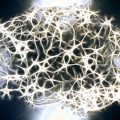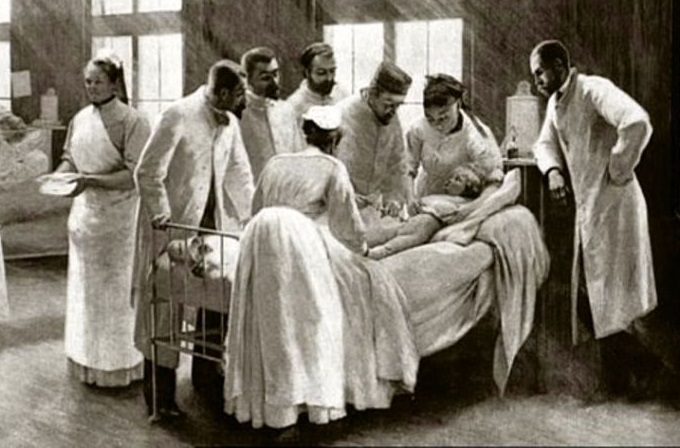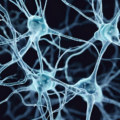A while back, I wrote an article called ‘Just a Vitamin Deficiency‘ in an effort to dispel the notion that vitamin deficiencies are inconsequential to health. Truth be told, I have written dozens of similar articles hoping to change the tide of disregard. A few weeks after publishing the vitamin article I began this one. I wanted to address the growing body of research suggesting that ATP production is somehow immaterial to health and healing. The two ideas are connected, of course, because without vitamins and minerals we cannot produce ATP and without ATP we cannot catabolize nutrients from the foods we consume into more ATP. In health, medicine, and research, we seemed to have lost sight of these connections in favor of ever more complicated, and indeed, bifurcated explanations of our ill health.
I decided not to publish this article originally. It seemed redundant. Then, lo and behold, another article hit social media once again bemoaning how energy production was unimportant relative to all of the other cool functions overseen by the mitochondria.
The analogy of mitochondria as powerhouses has expired. Mitochondria are living, dynamic, maternally inherited, energy-transforming, biosynthetic, and signaling organelles that actively transduce biological information.
To be fair, the article is exceptionally detailed and very well done and I agree with the authors overall. They clearly demonstrate the complexity of mitochondrial function. Where I have a problem though, is in the failure to recognize the primacy of ATP over all other functions. This is among my top pet peeves in the world of mitochondrial research and medicine. It is as if the simple act of making energy is not sexy enough to consider in health or disease. While I understand that the mitochondria are central regulators of just about everything and I understand that there are dozens or more cool pathways that are managed directly by the mitochondria and their various signaling proteins, what I do not understand is how we seem to miss the fact that all of these functions, and I mean all of them, require ATP. Indeed, decrements in ATP capacity often initiate, and certainly sustain, many of the negative reactions we see outlined in the annals of mitochondrial research.
In this particular article, the authors concede that defects in oxidative phosphorylation (OXPHOS) impact all of the functions they so eloquently describe.
Because most biochemical reactions taking place within mitochondria are directly or indirectly linked to OxPhos and Δψm [mitochondrial membrane potential], including substrate and ion uptake, mtDNA perturbations have widespread consequences for several metabolic pathways.
For the uninitiated, OXPHOS is the process by which the metabolized products of the foods we consume are shuttled through various enzymatic reactions within the mitochondria to ultimately produce ATP. Defects in OXPHOS not only imperil energy production but also set into motion a cascades of negative reactions. From an article published earlier this year:
OxPhos defects trigger mtDNA instability and cell-autonomous stress responses associated with the hypersecretory phenotype, recapitulating findings in plasma of patients with elevated metabokine and cell-free mitochondrial DNA (cf-mtDNA) levels. These responses are linked to the upregulation of multiple energy-dependent transcriptional programs, including the integrated stress response (ISR).
OXPHOS is clearly important to mitochondrial function, and why wouldn’t it be? The synthesis of energy, of ATP, is the foundation of life. Think about it for a moment. Energy is fundamental to survival, not incidental, but fundamental. So, if energy wanes all of the functions dependent upon said energy become disturbed. Sure, there are other mechanisms by which a particular pathway may become unfavorably altered, and sure, delineating those mechanisms is important, but each and every one of those patterns requires energy to execute. The degree to which energy metabolism is inadequate to the task will influence, if not determine, the pattern of response, irrespective of the other variables that may be at play.
Breathing, for example, requires energy and not just the mechanical act of inhalation and exhalation, but the absorption, trafficking and metabolism of oxygen (O2). Of course there are a lot of factors that can impede breathing and oxygen management that seem outside of the purview of mitochondrial influence, but in reality, they are not. Energy or ATP is required at every step, including arguably the most important step – the utilization of O2 to create more ATP.
For O2 to be used, we need ATP.
For ATP, we need functional mitochondria.
For functional mitochondria, we need macro- and micronutrients.
Food provides the substrates that allow the mitochondria to produce ATP. It provides macronutrients like protein, fats, and carbohydrates, and perhaps most importantly, food provides the micronutrients to utilize that fuel. It’s that simple, or at least it used to be, before industrial food manufacturing so thoroughly decimated the food supply leaving vast swaths of the population starved for vitamins and minerals.
The ills of modern food production notwithstanding, without sufficient micronutrients to metabolize food into fuel and ultimately into ATP, alternate processing pathways are used; pathways that consume more ATP than they produce, and pathways that burn dirtier and emit more toxins than the body has the energy/ATP to deal with. This is the root of all metabolic disorders and more often than not, most modern illness, regardless of diagnosis.
So, while detailing all of the cool things that mitochondria are responsible for is important to understand, especially if we are ever to move medicine away from the compartmentalized model that it has so fixated on, let us not forget ATP is the basis of life.
Perhaps, in our investigations mitochondrial function, we ought to examine ATP capacity, not just output but capacity, and the pathways therein used to produce this ATP and manage the metabolism of foods. Perhaps then we will finally understand how critical the right nutrients are to mitochondrial health. Perhaps we also ought to look at how to support native mitochondrial function, not by blocking aberrantly altered pathways, but by providing the mitochondria with the most basic building blocks for optimal ATP production – nutrition. If we can get the mitochondria to more efficiently produce ATP, would that not then favorably influence everything else?
From that perspective, it seems obvious that ATP, the energy cells consume to do all of the things that cells do, would be fundamental to health, and to life itself, but like things that should be obvious to modern medicine, it is not. Sadly, it does not appear to be obvious even to those who research and treat mitochondrial illness. ATP capacity is not something we can ignore, but we do, and this, I believe, is one of the biggest failings of modern medicine and modern mitochondrial research.
We Need Your Help
More people than ever are reading Hormones Matter, a testament to the need for independent voices in health and medicine. We are not funded and accept limited advertising. Unlike many health sites, we don’t force you to purchase a subscription. We believe health information should be open to all. If you read Hormones Matter, like it, please help support it. Contribute now.
Yes, I would like to support Hormones Matter.
Photo by Siora Photography on Unsplash.





















